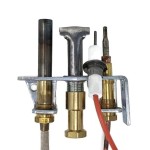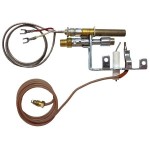Glass Front Fireplaces: An Overview of Functionality, Safety, and Aesthetics
Glass front fireplaces have become increasingly popular in modern homes, offering a balance of aesthetic appeal, energy efficiency, and safety features. These fireplaces, characterized by a glass panel that encloses the firebox, represent a significant evolution from traditional open-hearth fireplaces. Understanding the various aspects of glass front fireplaces, including their functionality, safety considerations, design options, and maintenance requirements, is crucial for homeowners considering this heating and decorative addition.
The primary function of a glass front fireplace remains the provision of supplemental heat. Unlike open fireplaces, which lose a considerable amount of heat up the chimney, glass front models are designed to retain heat within the room. The glass panel acts as a barrier, preventing drafts and reducing the escape of warm air. This contributes to improved energy efficiency and lower heating costs, particularly in colder climates. Furthermore, the controlled combustion within the firebox allows for more complete burning of fuel, resulting in reduced emissions and a smaller environmental footprint.
Beyond their heating capabilities, glass front fireplaces serve as focal points in interior design. The visual appeal of a flickering flame behind a clear glass panel adds ambiance and warmth to any living space. Available in a wide range of styles and sizes, glass front fireplaces can be customized to complement various architectural designs, from modern minimalist to classic traditional. The glass front also provides an unobstructed view of the fire, enhancing the aesthetic experience.
Safety Features and Considerations
One of the most significant advantages of glass front fireplaces is their enhanced safety compared to traditional open fireplaces. The glass panel serves as a physical barrier, preventing sparks, embers, and hot ash from escaping into the room. This significantly reduces the risk of accidental fires and burns, making them a safer option, especially in homes with children or pets. The enclosed firebox also prevents drafts from spreading smoke and fumes into the living space, improving indoor air quality.
However, it is crucial to understand the safety considerations associated with glass front fireplaces. The glass panels can become extremely hot during operation, posing a burn hazard if touched. Fireplace manufacturers often include safety screens or barriers to further protect against accidental contact. It is also important to ensure that the fireplace is properly installed and maintained according to the manufacturer's instructions. This includes regular inspections of the venting system, cleaning the glass panel, and checking for any signs of damage or wear.
Carbon monoxide (CO) poisoning is a serious concern with any type of fuel-burning appliance, including glass front fireplaces. A properly functioning fireplace will vent CO safely through the chimney or venting system. However, a blockage in the venting system or incomplete combustion can lead to CO buildup inside the home. It is therefore essential to install carbon monoxide detectors on every level of the house, especially near sleeping areas. Regularly testing these detectors is crucial for ensuring their proper function. Regular inspection and cleaning of the chimney or vent system by a qualified professional is also critical to prevent blockages and ensure safe operation.
Types of Glass Front Fireplaces: Fuel Source and Design
Glass front fireplaces are available in various fuel sources, each with its own advantages and disadvantages. The most common types include wood-burning, gas-burning (natural gas or propane), and electric fireplaces. Each type offers a different experience in terms of aesthetics, convenience, and cost. Wood-burning fireplaces offer the classic appeal of a real wood fire, including the crackling sounds and authentic aroma. However, they require a supply of firewood, regular cleaning of the firebox and chimney, and adherence to local regulations regarding wood burning.
Gas-burning fireplaces offer greater convenience, as they can be ignited with the push of a button or a remote control. They also eliminate the need for firewood and ash removal. Gas fireplaces can be vented directly through a wall or roof (direct vent) or they can use an existing chimney (vented). Direct vent models are generally more efficient and versatile in terms of installation options. Electric fireplaces, on the other hand, do not require a chimney or venting system, making them the easiest to install. They operate on electricity and produce heat through a heating element and offer realistic flame effects through various technologies.
The design options for glass front fireplaces are vast, ranging from traditional to contemporary styles. Traditional designs often feature ornate mantels, decorative firebacks, and simulated brick interiors. Contemporary designs tend to be more minimalist, with clean lines, stainless steel accents, and unobstructed views of the flames. The shape and size of the glass panel can also vary, from rectangular to arched, and from small to panoramic. Homeowners can choose a design that seamlessly integrates with their existing decor or makes a bold statement.
The interior of the firebox can also be customized to enhance the aesthetic appeal. Options include ceramic logs, glass beads, river rocks, and other decorative elements. These elements can be arranged to create a unique and personalized look. Some models even feature adjustable flame heights and colors, allowing homeowners to create the perfect ambiance for any occasion. Lighting within the firebox can also be adjusted to enhance the visual effect of the flames.
Installation, Maintenance, and Operational Considerations
Proper installation is essential for the safe and efficient operation of a glass front fireplace. It is highly recommended to hire a qualified professional to install the fireplace, ensuring that it meets all local building codes and regulations. The installation process typically involves preparing the fireplace opening, installing the venting system (if required), connecting the fuel source (for gas fireplaces), and testing the fireplace to ensure proper function. Failure to properly install the fireplace can lead to safety hazards, such as carbon monoxide leaks or fires. For electric fireplaces, installation is primarily a matter of ensuring adequate electrical supply and following the manufacturer's instructions for placement and ventilation.
Regular maintenance is crucial for maintaining the performance and longevity of a glass front fireplace. This includes cleaning the glass panel, inspecting the venting system, and checking for any signs of damage or wear. The glass panel should be cleaned regularly with a specialized glass cleaner to remove soot and residue. The venting system should be inspected annually by a qualified professional to ensure that it is free of obstructions. Any damaged or worn parts should be replaced promptly. For gas fireplaces, it's also crucial to check the gas supply lines and connections for leaks or damage. The pilot light should also be inspected and cleaned as needed.
Operating a glass front fireplace requires adherence to the manufacturer's instructions. It is important to use the appropriate fuel type (wood, gas, or electricity) and to avoid overloading the firebox. The fireplace should never be left unattended while in operation. Children and pets should be kept away from the hot glass panel. The venting system should be kept clear of obstructions, such as snow or debris. Furthermore, it's crucial to understand the specific operating instructions for the model in question, as features and controls can vary significantly between different types and brands. Correct operation ensures safety and heat efficiency.
The choice of a glass front fireplace involves several considerations, including the desired fuel source, aesthetic preferences, budget, and installation requirements. Each type of fireplace offers a unique combination of features and benefits, so it is important to carefully weigh the options before making a decision. Researching different models, reading reviews, and consulting with professionals can help homeowners make an informed choice and enjoy the warmth and beauty of a glass front fireplace for years to come.

Wood Burning Fireplace Insert Uniq 32 Full Glass Front Westfire

Studio Glass Gas Fires Gazco Built In Contemporary Fireplaces

Wood Burning Fireplace Insert Uniq 32 Full Glass Front Westfire

Fireplace Glass Doors Vs Screens Full Service Chimney

Majestic He Limestone Glass Fronted Fireplace Suite Warehouse

What Is The Difference Between Open And Glass Fronted Fireplaces

Flavel Sophia The Fireplace Super

Clear 130 Glass Front Fireplace Flamestyle

Stunning Ortal Clear Glass Fronted Gas Fire

Brunner Style Wood Burning Front Glass Fireboxes Robey S
Related Posts








